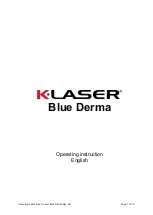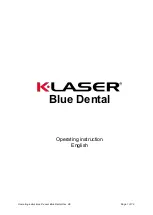
11
13. HANDLING AND TRANSPORTATION
Before shipping, the units are carefully packed inside cardboard boxes. When transporting and storing the equipment, pay
attention to the direction indicated on the boxes themselves.
Upon receipt, check that the package has not been damaged and store the equipment in a dry location.
14. PRECAUTIONS
The warnings about the risks involved in using a unit for lubricants must be read.
The operator must understand its operation and clearly understand the hazards connected to pumping pressurised oils.
Therefore we recommend the following:
•
Check the chemical compatibility of the material with which the unit is built with the fluid to be pumped (see chap. 4).
An incorrect selection could cause, in addition to damaging the units and pipes, serious risks for people (spillage of
irritating products that are harmful to health) and for the environment.
•
Never exceed the maximum operating pressure permitted for the unit and the components connected to it. In the
case of doubt, refer to the data specified on the machine plate.
•
Only use original spare parts.
•
If components must be replaced with others, make sure they are suitable for operating at the unit's maximum
operating pressure.
Note:
Personnel must use protective devices, garments and tools in compliance with current standards with regard to the
location and the use of the unit both during work as well as during maintenance operations.
Electric current
Do not carry out any work on the machine before disconnecting it from the electrical power supply and making sure that
no one can reconnect it during the operation. All the installed equipment (electric and electronic), tanks and basic
structures must be connected to the ground line.
Inflammability
The lubricant used in the lubrication circuits is normally not an inflammable liquid. It is however necessary to adopt all the
possible measures to prevent that it comes into contact with very hot parts or open flames.
Pressure
Before each operation, make sure there in every branch of the lubrication circuit that there is no residual pressure that
could cause oil to spray when disassembling fittings or components. After long periods of inactivity, check the seal of all
the parts subject to pressure. Do not subject the fittings, pipes and pressurised parts to violent impacts. Damaged flexible
pipes or fittings are DANGEROUS and must be replaced. Only original spare parts should be used.
Noise
Under normal operating conditions, noise emission
does not exceed
70 dB
“A”
at a distance of 1 metre (39.3 inches) from
the unit.
For further information about the technical specifications and the safety measures to adopt, refer to the product safety
sheet (Directive 93/112/EEC) relative to the type of lubricant selected and supplied by the manufacturer.
Lift the equipment according to the direction shown on the cardboard package.
The machine components can be stored at temperatures between -30 and + 80 °C; however, to prevent
damage, it must only be started up after the machine has reached a temperature of +5 °C.
ATTENTION!
Never try to stop or deviate any leaks with your hands or other body parts.
Summary of Contents for MiQueL
Page 10: ...10 12 DIMENSIONS...






























